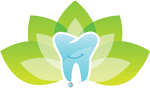Reasons and Procedures for Tooth Extraction
Some people have the notion that only baby milk teeth can be removed, but permanent adult teeth are also susceptible to tooth extraction. It’s true that permanent teeth should naturally last a lifetime, but a number of reasons can lead to your tooth being removed.
Reasons for Tooth Extraction in Toronto
Crowded Mouth – An orthodontic procedure can be carried out to align teeth in your mouth. Tooth misalignment can be caused by your teeth being too big to all fit in your mouth or having a small jawbone, in which case your dentist pulls some teeth out.
Infections – Severe tooth decay that has reached the pulp area of the root can easily lead to infection in your teeth. This definitely prompts a Root Canal Therapy (RCT) to save your teeth and prevent additional damage to the bone tissue. However, if your tooth is overly compromised to be saved by an RCT and antibiotics, an extraction is the next immediate option.
Periodontitis – A gum infection that has progressed to periodontitis severely damages tissues and the bone surrounding your teeth. It causes receding gums and obviously loosens your tooth/teeth; therefore, tooth extraction is necessary.
Peripheral Infections – Your immune system might be compromised by an external procedure such as chemotherapy or organ transplant. If, by chance, they risk an infection to your teeth or entire dentine, it’s reason enough to have the affected tooth pulled out.
Impacted wisdom teeth – You will have your wisdom tooth or teeth extracted if they are stuck inside the gums. This can be due to inadequate jaw space or a crowded mouth. The gum tissue that covers the tooth is cut away for the dentist to remove the impacted tooth out.
Simple Extraction
Your dentist first numbs the tooth area that’s receiving the extraction using a local anesthetic. This ensures comfort, so you don’t feel any pain during the procedure, just pressure. A hand instrument, an elevator, is then used to loosen the tooth. Your dentist then uses forceps to remove the tooth.
Surgical Extraction
For a surgical extraction, you receive a local anesthetic to numb the surgical area and a sedative to keep you relaxed throughout the procedure. General anesthesia is used if the removal is performed on your child’s tooth, or if you have an underlying condition. This helps to keep you unconscious during the procedure.
An incision is then made into your gum for the surgeon to access more of the tooth being extracted.
Risks Involved
A clot usually forms in the socket where the tooth has been removed. The tooth extraction healing process is slowed if the clot is dislodged. It leaves the underlying bone exposed and is referred to as a ‘dry socket.’ Your dentist can dress it with a sedative for the formation of a new clot.
Supplementary tooth extraction infections include:
- Nausea and Vomiting
- Prolonged bleeding
- Coughs
- Inflammation of the surgical area
- Chills or severe fever
Healing and Aftercare
Tooth extraction recovery should occur within a few days after the procedure. Below are tooth extraction aftercare tips from Arlington Dental to help speed up the recovery.
- Avoid Smoking
- Don’t skip your prescribed medications
- To prevent swelling, hold down an ice pack over the extraction area immediately after the procedure.
- Limit mouth activity for the first two days
- Don’t lie flat, support your head with a pillow
- Brush and floss daily while avoiding the extraction area to evade infections
- Don’t drink using a straw for the first two days
- Engage soft foods such as soup, pudding, and yogurt till the clot is intact, then you can adjust to solid foods.

